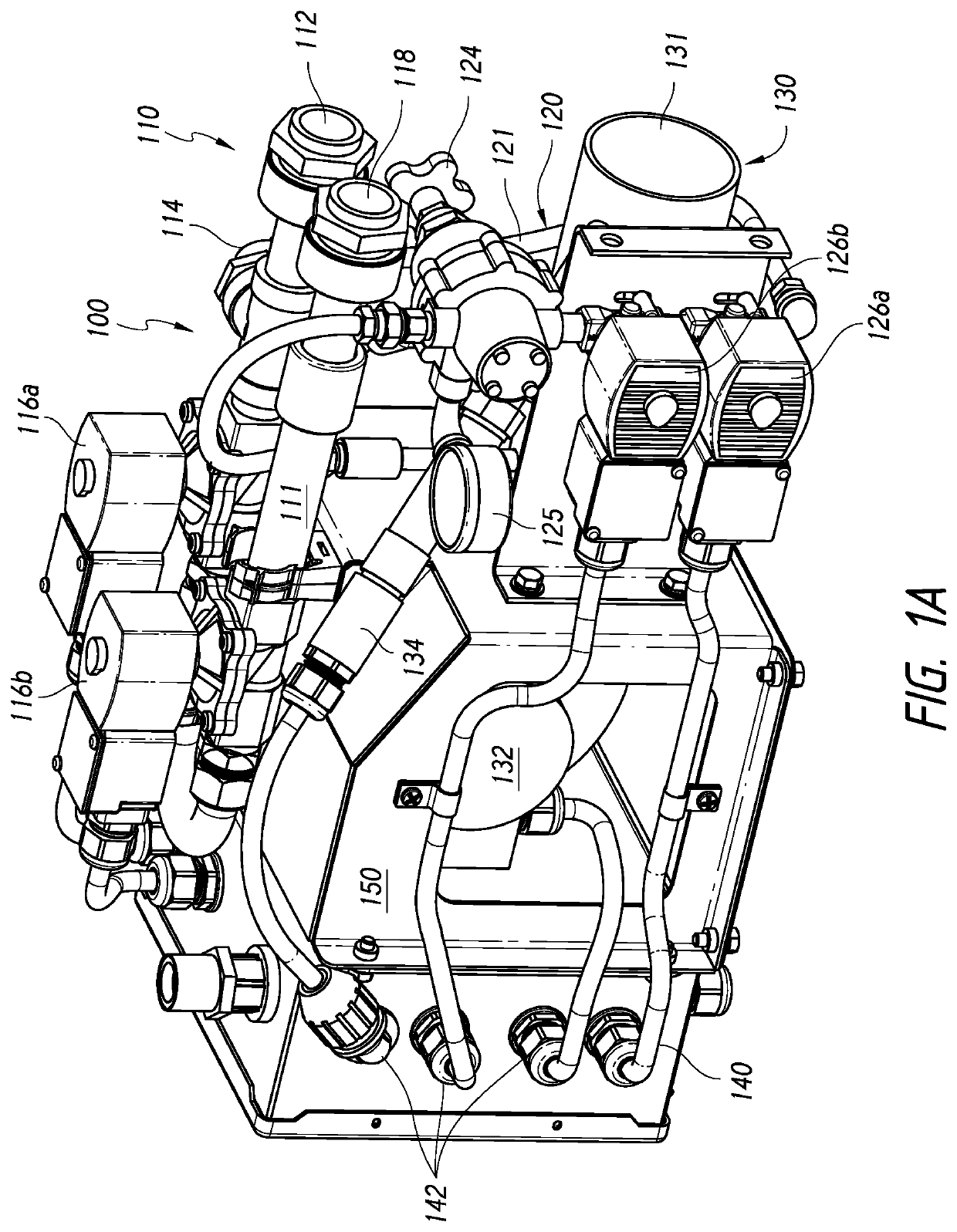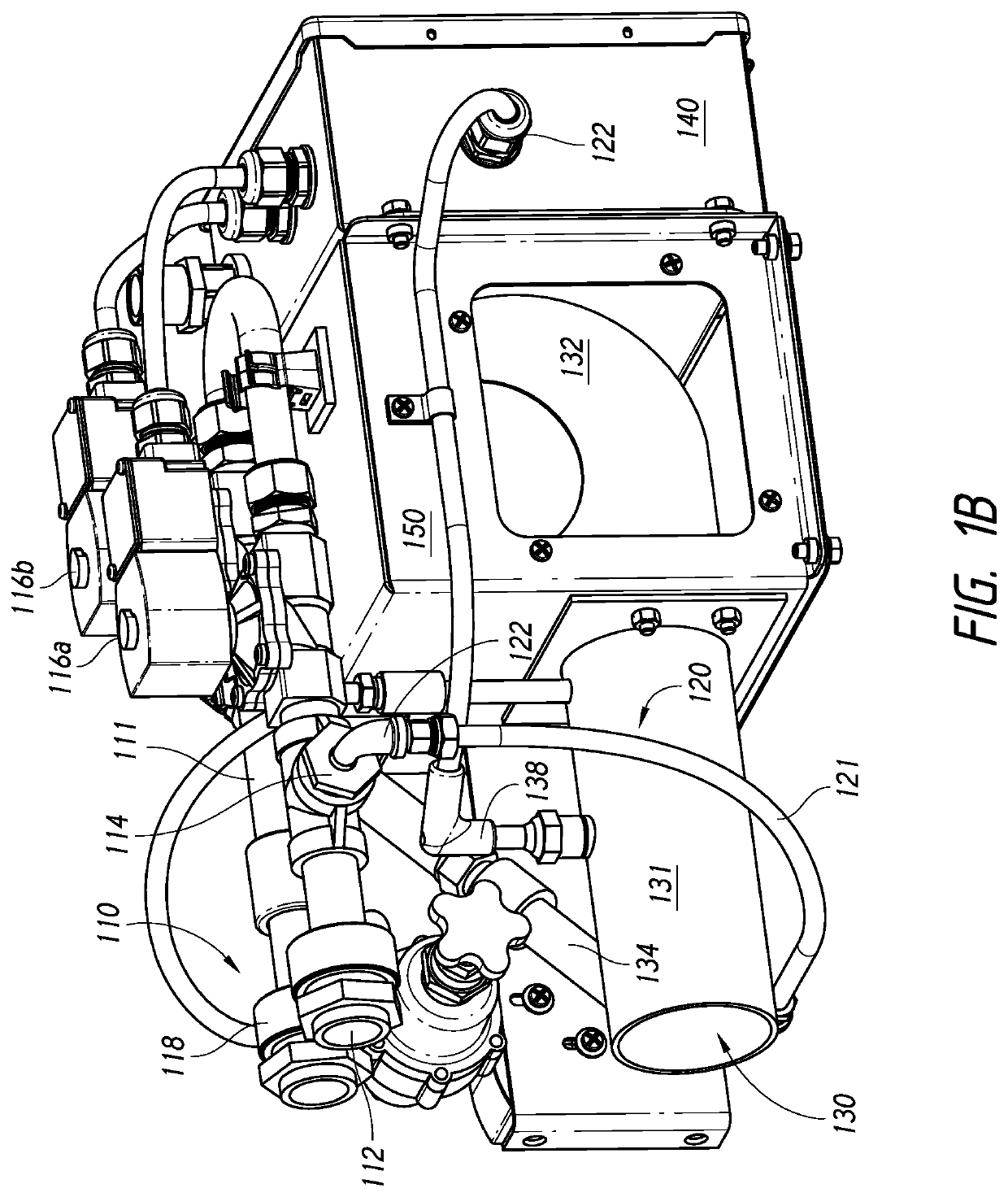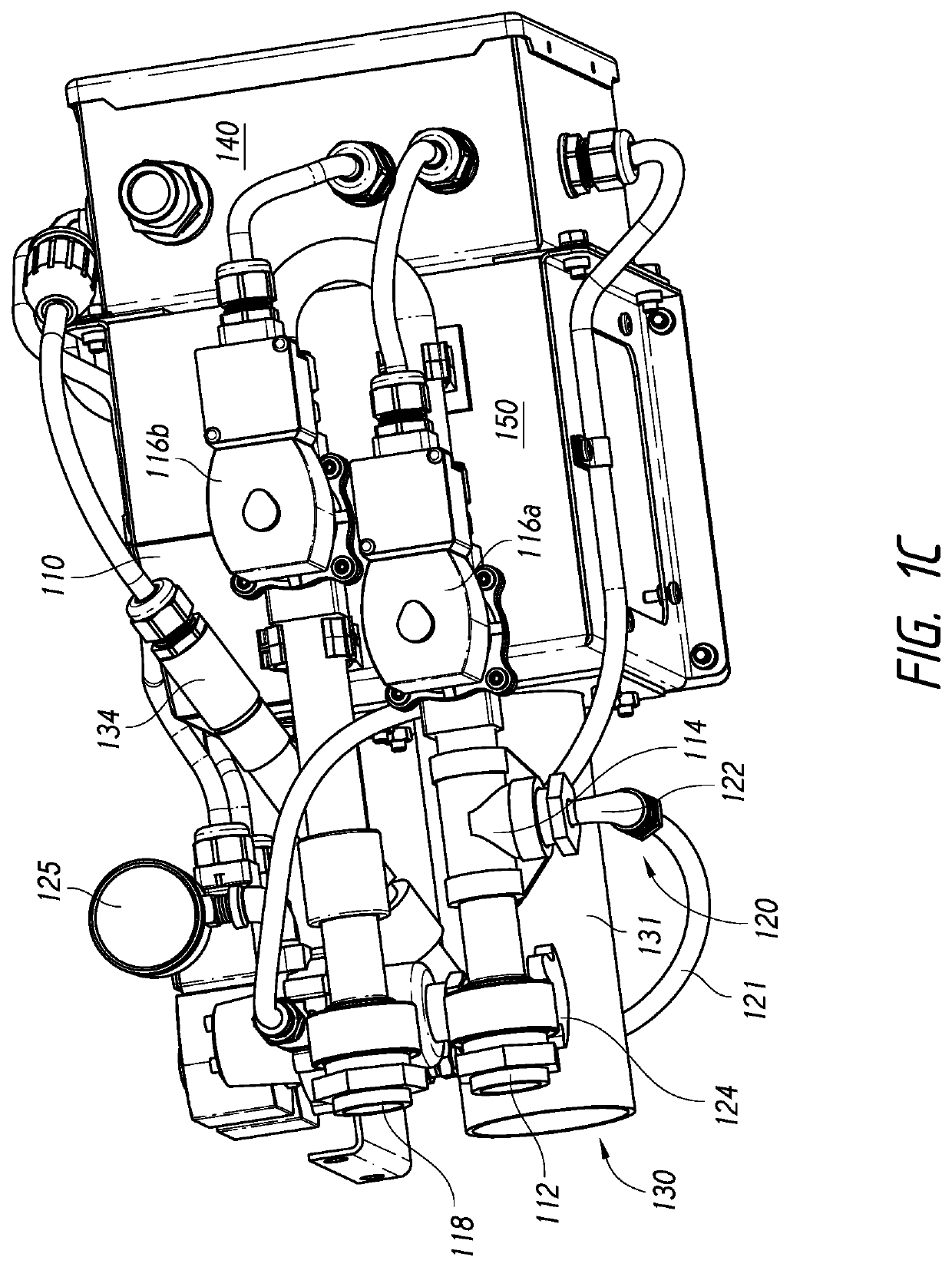Pilot and burner system for firefighting training
a burner system and pilot technology, applied in the direction of lighting and heating equipment, combustion types, instruments, etc., can solve the problems of affecting compliance with legal, regulatory, and/or administrative training requirements, requiring several hours of labor plus travel costs, and requiring a relatively expensive procedure for the training facility, so as to reduce the cost of disassembly of the electrical infrastructure of the device on site, and adversely affecting complian
- Summary
- Abstract
- Description
- Claims
- Application Information
AI Technical Summary
Benefits of technology
Problems solved by technology
Method used
Image
Examples
example pilot
and Burner System
FIG. 2 illustrates a functional block diagram of an example pilot and burner system 202 including a pilot and burner apparatus 200 and a flame control system 260. The pilot and burner apparatus 200 can be similar to any of the pilot and burner apparatuses described herein with reference to FIGS. 1, 4, and 5. The pilot and burner apparatus 200 can be configured to be communicably coupled to the flame control system 260. The flame control system 260 can be configured to control components of the pilot and burner apparatus 200 to light a pilot flame, to control the flow of fuel to a burn prop through fuel pipe 284, to control the pilot flame delivered through a main burner pipe 282, and / or to control attributes of the fire produced by the pilot and burner apparatus 200. Attributes of the fire produced can include, but are not limited to, flame shape, flame height, flame volume, burn rate, visual effects, and combinations thereof. In some implementations, the attributes...
embodiment 1
2. The integrated pilot and burner apparatus of Embodiment 1 further comprising a pilot regulator coupled to the pilot fuel conduit, the pilot regulator configured to regulate a fuel pressure in the pilot fuel conduit.
3. The integrated pilot and burner apparatus of any of Embodiments 1-2, wherein the integrated pilot and burner apparatus weighs less than or equal to 50 pounds.
4. The integrated pilot and burner apparatus of any of Embodiments 1-3 further comprising a secondary main fuel valve positioned between the main fuel valve and the main fuel outlet.
5. The integrated pilot and burner apparatus of any of Embodiments 1-4 further comprising a secondary pilot fuel valve positioned between the pilot fuel valve and the pilot fuel outlet.
6. The integrated pilot and burner apparatus of any of Embodiments 1-5, wherein the ignition component comprises:an ignition coil; anda flame igniter,wherein the ignition coil is electrically coupled to the flame igniter, andwherein the flame igniter ...
embodiment 7
8. The integrated pilot and burner apparatus of Embodiment 7, wherein the optical sensor comprises an ultraviolet sensor configured to generate electrical signals corresponding to levels of ultraviolet radiation within the pilot flame tube.
9. The integrated pilot and burner apparatus of any of Embodiments 1-8 further comprising a support structure configured to couple to one or more of the pilot flame tube, the main fuel conduit, and the pilot fuel conduit.
PUM
 Login to View More
Login to View More Abstract
Description
Claims
Application Information
 Login to View More
Login to View More - R&D
- Intellectual Property
- Life Sciences
- Materials
- Tech Scout
- Unparalleled Data Quality
- Higher Quality Content
- 60% Fewer Hallucinations
Browse by: Latest US Patents, China's latest patents, Technical Efficacy Thesaurus, Application Domain, Technology Topic, Popular Technical Reports.
© 2025 PatSnap. All rights reserved.Legal|Privacy policy|Modern Slavery Act Transparency Statement|Sitemap|About US| Contact US: help@patsnap.com



